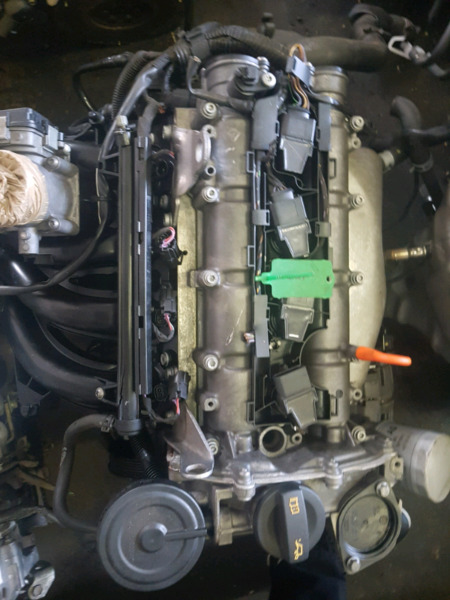Select a durable clp engine for better efficiency.
Select a durable clp engine for better efficiency.
Blog Article
Exactly How a Clp Engine Can Enhance Effectiveness in Various Industries
The arrival of CLP engines marks a considerable change in functional efficiency throughout various industries, driven by their capacity to enhance gas intake and lessen downtime. Industries such as production and logistics stand to gain considerably from their robust design and consistent power output, which assure to simplify procedures and enhance performance. As companies significantly prioritize sustainability along with efficiency, the role of CLP engines comes to be much more critical. What remains to be seen is just how these innovations will certainly form the future landscape of commercial operations and their effect on wider financial trends (clp engine).
Overview of CLP Engines
CLP engines, or Constant Fluid Propellant engines, represent a substantial advancement in propulsion modern technology, especially for area applications. These engines utilize a continual feed system that permits the sustained expulsion of propellant, resulting in improved performance and performance compared to conventional strong or hybrid propulsion systems. By maintaining a continuous flow of fluid propellant, CLP engines can accomplish more precise drive control, which is vital for maneuvering spacecraft in various objective circumstances.
The layout of CLP engines incorporates sophisticated products and innovative gas monitoring systems. clp engine. This results in minimized weight and increased reliability, crucial elements for long-duration area objectives. Furthermore, the continuous operation lessens the risk of combustion instability, a typical obstacle in standard rocket engines.

Benefits in Manufacturing
The manufacturing of Continuous Fluid Propellant (CLP) engines presents numerous significant advantages that enhance both performance and cost-effectiveness. Among the main benefits is the streamlined production procedure, which minimizes the intricacy related to typical propulsion systems. By making use of fluid propellant, manufacturers can accomplish better accuracy in engine performance, resulting in optimized power output and lowered waste.
Additionally, CLP engines help with a higher level of modularity, permitting simpler combination right into numerous production lines. This flexibility can significantly lower lead times and enhance total functional versatility. The usage of CLP modern technology also tends to lessen the requirement for extensive upkeep as a result of less moving parts, which equates right into reduced downtime and operational costs.

Applications in Logistics
Leveraging Continual Liquid Propellant (CLP) engines in logistics uses significant advantages in functional performance and reliability. These engines give a robust remedy for numerous transportation requirements, allowing the seamless motion of goods across vast distances. The inherent layout of CLP engines allows for consistent power result, which translates into smoother and more foreseeable transportation timetables.
Among the key applications of CLP engines in logistics is in durable products transport, where they can drive both ground and airborne vehicles. Their ability to keep high performance under varying load problems guarantees that distribution timelines are fulfilled, thus improving customer complete satisfaction. Additionally, CLP engines can be integrated right into automated logistics systems, helping with real-time monitoring and optimizing path planning.
Additionally, the resilience of CLP engines minimizes maintenance downtime, allowing logistics companies to maximize their functional capacities. This is particularly valuable in warehousing procedures, where effectiveness in dealing with and transferring items is essential. As logistics remains to progress, the integration of CLP engines represents a forward-thinking strategy that not just improves performance however also sustains the market's expanding demands for integrity and rate.
Effect On Power Performance
Exactly How do Constant Fluid Propellant (CLP) engines enhance energy efficiency in transportation? CLP engines utilize a consistent flow of fluid gas, enhancing combustion processes and preserving a steady drive output. This design reduces energy losses linked with conventional burning engines, where gas shipment can vary and bring about inadequacies.
The constant operation of CLP engines allows for a much more efficient thermal additional info cycle, causing greater specific impulse contrasted to standard engines. clp engine. This converts to minimized fuel usage for the same amount of job done, substantially reducing functional expenses throughout different transportation markets, consisting of air travel and maritime sectors
Additionally, the capability of CLP engines to preserve optimal performance under varying load problems reduces the requirement for frequent velocity and deceleration, additionally boosting gas effectiveness. Boosted power performance not only adds to cost financial savings however also causes decrease greenhouse gas emissions, aligning with international sustainability goals.
Future Trends and Innovations
Arising improvements in Constant Liquid Propellant (CLP) engine modern technology assurance to transform the landscape of transportation effectiveness and sustainability. As markets pivot toward greener choices, CLP engines stand at the leading edge, integrating cutting-edge products and style methods that boost performance while helpful hints decreasing environmental impact.
One of the most appealing patterns is the adoption of hybrid systems that incorporate CLP engines with eco-friendly energy sources. This synergy can enhance gas intake and decrease exhausts, straightening with global sustainability objectives. Furthermore, advancements in computational liquid characteristics (CFD) are assisting in the design of more aerodynamically effective engines, causing lowered drag and boosted gas performance.
In addition, the advancement of smart tracking systems is established to improve functional performances. These systems take advantage of data analytics and IoT modern technology to maximize engine performance in real-time, guaranteeing that the engines operate within their most efficient criteria.
As research proceeds to explore alternative propellant solutions-- such as biofuels and artificial gas-- the future of CLP engines looks appealing. By taking advantage of these technologies, industries can not just boost their effectiveness yet also add significantly to a cleaner, more sustainable future in transport.
Final Thought
In final thought, CLP engines stand for a considerable innovation in effectiveness throughout multiple markets. The combination of sophisticated products and less moving parts reduces maintenance needs, while alignment with sustainability goals positions CLP engines as an essential modern technology for the future.
Report this page